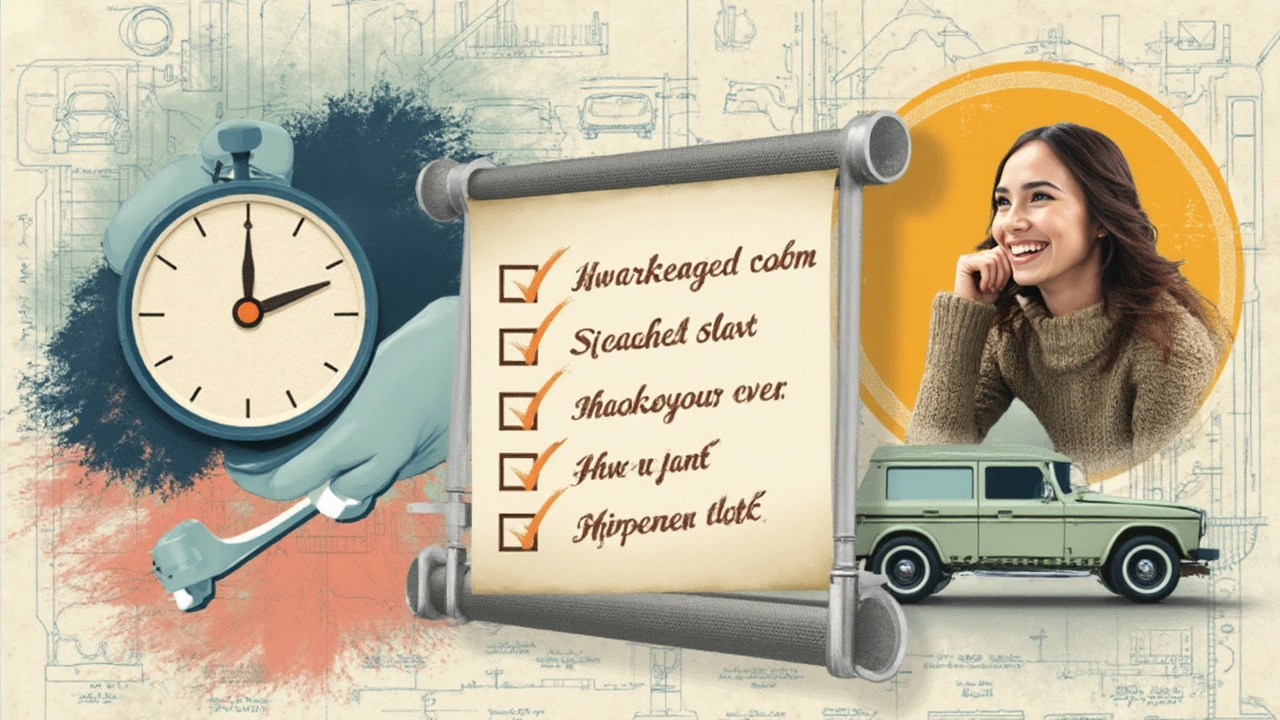Ever found yourself staring at a puddle of coolant under your car or feeling your living room chill to the bone on a January morning? Radiators don’t give much warning before they fail, but when they do, the clock starts ticking. How long are you going to be shivering or stuck calling for a ride? Loads of folks jump on Google with the same question as soon as their radiator decides to pack it in because, let’s face it — nobody’s got endless time or patience for home or car repairs. You want numbers, not just vague reassurances, plus the practical stuff nobody seems to mention. So, buckle in — we’ll walk through exactly how long it takes to replace a radiator, whether it’s in your car or your living room, why the job isn’t as predictable as you’d hope, and how you can make it less of a headache.
What Type of Radiator Needs Replacement?
First off, we need to clear something up. When people ask about "radiator replacement," are you talking about the thing in your car that cools down your engine, or the big metal unit under your window that’s supposed to heat up your living space? The answer changes depending on which radiator you’re staring at. With cars, you’re battling tight engine bays, brittle old hoses, and sometimes a jungle of other parts in the way. Home radiators? Well, you’re usually wrenching around in awkward corners or slicing through old paint. Each version has its quirks.
Let’s get clearer: if you’re dealing with a car, most folks need to replace their radiator after noticing overheating, a clear leak (you see green or pink fluid on the pavement), or after a mechanic lets you know the bad news. Typical modern cars have radiators that can be swapped out in two or three hours by an expert with a lift and a toolkit. But DIY in your driveway? Double that if you’re not dancing through the steps by memory. For home radiators, the big ones heating your house—water-based or steam—the swap can be surprisingly quick for a pro, maybe 1-2 hours, but it can explode into a day-long ordeal if valves or pipes are ancient or seized up. I once tried to help my friend swap his old column radiator, and the paint alone was holding the pipes together tighter than a zip tie. In short, the time depends a lot on your setup, your tools, and how much stuff is in the way (or rusted solid).
How Long Does Radiator Replacement Actually Take?
If you’re hoping for a magic number, here’s the brass tacks. For cars: a professional mechanic can often replace a radiator in about two hours, sometimes even less for familiar models. That said, my brother’s compact hatchback took a pro just an hour and fifteen minutes last fall. But if you’re tackling this yourself and you’re new to the whole wrenching scene, expect to burn at least four hours, possibly a whole afternoon if you drop a bolt in the engine bay (we’ve all been there). Waiting on stubborn hoses or a stuck bolt? Better budget extra time.
For home heating radiators, speed depends on what you’re swapping. Is it a modern panel model with quick-connect valves? A confident plumber might be done in under an hour. Huge cast-iron beasts with pipes fused from decades of neglect, though, can turn into a full-day project. Even the pros get caught by surprises—once, an installer I knew took nearly six hours working a ten-minute job because the shutoff valve snapped off in his hand. Moral of the story: expect the unexpected. According to a guide from HomeServe UK, "Swapping a standard radiator will often take between one and three hours." But remember, every job seems to have its own nasty little surprise.

Key Steps and Time-Saving Tips in Radiator Replacement
If you’re itching to do this yourself, knowing each step helps a ton. Whether it’s for your car or home, having the right tools at the ready will keep cursing to a minimum. Here’s a quick breakdown for both types:
- Turn off power or shut off water (super important!)
- Drain coolant (for cars) or bleed radiator (for homes)
- Disconnect hoses/pipes and mounting hardware
- Remove old radiator—sometimes the trickiest part
- Install replacement, making sure fittings and seals are tight
- Reconnect, refill (or top up fluids), and test for leaks
Now for some practical advice: spray stuck bolts with penetrating oil ahead of time, label everything as you go (seriously, take phone pics), and keep a catch pan underneath—no one likes stepping in coolant or water. If you’re working on an old home radiator, be ready for surprises like snapped-off valves or sludge buildup. With car radiators, beware hidden brackets and fragile plastic fittings. For both, having a buddy to help lift heavy or awkward pieces can turn the job from aggravating to almost fun.
One thing most guides won’t tell you: sometimes sourcing the right replacement takes longer than the swap itself. Ordering a rare car radiator or a vintage cast-iron model? That could take days longer than the actual work. Double-check part numbers and sizing before you start tearing into things.
Common Surprises That Drag Out Radiator Jobs
No matter how organized you are, you’ll always hear stories of radiator jobs ballooning far past the time on the box. What’s slowing everyone down? It’s rarely the new radiator—it’s the surprises. For cars, seized bolts, rounded fasteners, brittle hoses that crack, and radiators that don’t quite fit the way the original did are all classic time-eaters. Not to mention, newer vehicles with more sensors and electronics packed into the engine bay make for extra caution. Just last year, AAA reported more than 5 million car overheating incidents and highlighted that botched radiator fixes were a common cause.
When swapping home radiators, surprises are even more common in old houses. While helping a neighbor two streets over, I once found a pipe connection literally held together by layers of paint and tape. I swear, it was a DIY band-aid from decades ago. Other headaches? Leaky or frozen valves, ancient piping that needs replacing, and radiators too big to fit through doors. Someone I know even had to temporarily take out their window to fit a cast-iron classic. It’s worth keeping a backup plan—like borrowing a heat fan—if things run long in cold weather.
“Sometimes the biggest challenge with radiator jobs isn’t the mechanics, but the unexpected—nothing holds up a job like a hidden leak from a corroded connection or a missing part,” says Andy Reynolds, certified home repair specialist at Checkatrade.
If you run into a nasty surprise, don’t panic. Taking breaks and having snacks on hand (my wife Imogen brings the best cookies when I’m buried in radiator woes) can keep your nerves steady and your spirits up. And remember, quick online forums are often lifesavers for random, weird problems.

Should You Call a Pro or Go DIY?
Let’s get real: Some radiator replacements are a breeze for a handy DIYer, but lots of folks call in the pros—and that saves more than just sweat. Car owners usually opt for a pro if the radiator sits buried under other engine bits. For home radiators, unless you’re comfortable turning off water/gas and making tight pipe connections, a licensed plumber is worth the cash. Messing up could mean flooding your room or melting your engine.
If you’re still determined to DIY, make sure you’ve got: the right tools (including big wrenches!), time to spare, and backup transportation if the car isn’t ready by Monday morning. Watch a couple of recent videos for your specific car model or radiator type. Tips from last week’s DIY fan might not match your make and model. For home setups, double-check system bleed instructions—you don’t want air in your lines causing noisy pipes after your heroic swap.
If you want peace of mind and can spare the budget, good pros bring extra experience. They’ve seen weird leaks, hidden rust, wrong-size parts—they can improvise faster than most. According to Fixr.com’s 2025 industry survey, the average cost of car radiator installation in the U.S. sits at $300-900, while home radiator replacement often ranges from $400 for a quick swap to over $2000 for big, old units or complex systems.
Bottom line: DIY radiator replacement is doable, rewarding even, if you’re prepped and patient. But for tricky jobs, or if your time’s more valuable than the money saved, a pro will get you warm or back on the road faster—usually in just a few hours.

